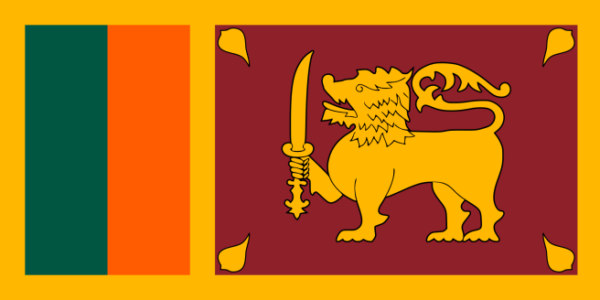GROWING UP IN NAWALAPITIYA : WORLD WAR 11–DAYS OF DARKNESS & JOYS OF BOYHOOD: Memories of yesteryear – by G.A.D.Sirimal

Source:Sunday Island
My birthplace was Nawalapitiya surrounded by lush green tea gardens, the meandering Mahaveli river under Salem Bridge with cascading waterfalls, and the Udarata Menike climbing to Galaboda Station to the rhythm of UDARATA MANIKETA PATA KUDA DEKA DEKA
I went to St. Mary’s College at that time. During the war, air raid drills were conducted to teach us what we should do when the siren goes off announcing enemy aircraft. We all had a small wooden stick hanging round our necks which we had to bite no sooner the siren was sounded, and crawl under our desks plugging our ears with our fingers.
Our teacher, Miss Kelly, was a fat lady who had to demonstrate how it was done. Once she struggled and crept under her table in her short skirt with her bulky posterior up in the air. She lay belly flat and when the ‘All Clear’ was sounded, trying to get up she struck her head on the edge of her table, toppling a bottle of ink which spilled its contents on the table – fortunately not on her.
We had no ballpoint pens in those days and used white China ink-wells placed in a circular aperture in the fronts of our desks. We dipped our ‘G’ and Relief nibs into them to do our writing.
Miss Kelly got up rubbing her head much to the amusement of her students. She took it in good spirit with a hearty laugh at herself. What happened to me was different. The desk toppled hitting the back of the boy in front who was also trying the same exercise.
At home, we studied under kerosene lamps placed on the table with all doors and windows blacked out. We were taught songs such as ‘There will always be an England, and England shall be free,’ and ‘Pack up your troubles in your old kit bags and Smile, Smile, Smile.’ ‘She’ll be coming round the mountain‘ was another favourite with ‘God save our King, Send him Victorious, Happy and Glorious—’ on top of them all.
My home was near the main road and as the South East Asia Command under the command of Lord Louis Mountbatten was at the Peradeniya Botanical Gardens, about 20 miles from Nawalapitiya, convoys of trucks passed very frequently and smiling soldiers, waving their hands with the “V” (victory) signal threw cigarettes, sometimes tins of corned beef and chocolates which we greedily picked up.
There was a civilian unit called ARP. Meaning, I believe, Air Raid Precaution. Its men came around to see whether door and windows were properly blacked out.
The Civil Defence Commission had small cafes where pittu made out of Ricena was served with katta sambol. Sweets like aluwa made from corn flour were sold cheap. Admittedly the nation never went hungry. Various grains (rice subtitutes) were supplied and then Ceylon was lucky having our own jak, manioc, sweet potatoes and bread fruit in addition to what our Colonial Rulers supplied under trying and dangerous conditions.
My eldest brother had joined the CLI (Ceylon Light Infantry) before the war and wore well-polished brown boots and knee-high ‘putees’; khaki tunic, a brown helmet and a rifle completed the uniform which attracted my brother to the army. When the war broke out, he was enlisted for active service and on the day he was leaving, he fell on his knees, worshipped our parents and bade a tearful farewell. He was back home all smiles when he was demobbed about a year later.
He went back to his old job of conductor on a tea estate. As most European planters had joined the army, he was promoted superintendent of an estate in Kandapola – Bramley if I remember right.
Sir John Kotalawala who was the Minister of Transport and Works then, set up a military unit in the Railway and those who wished to join were ranked according their positions in the CGR. Ordinary soldiers were porters, linesmen etc. who in civvy street wore sarongs with some sporting ‘kondes’. When they joined the army they were issued khaki uniforms and heavy boots and the kondes were cut off.
A platoon was set up under the command of a regular army officer – Capt. V.W. Halpe if I remember right, who was the father of Prof. Ashely Halpe. He was assisted by another regular army officer and parades were held on the tarmac at the Goodshed. It was funny watching men who never wore shoes marching to commands of ‘left, right’ in their heavy boots.
One porter who passed our home in uniform and heavy boots was shy to be gazed at by us children. They were issued rations which included corned beef, dhal and Maldive fish then unavailable in the market. Most of them sold the hard-to get items with the porter/soldier mentioned above selling his rations to us. He was under orders from my mother not to sell them elsewhere.
In Kandy, ‘ Wace Park’ where solders and WRENS carried on their exercises (and other activities), with no care for outsiders, sometimes providing treats for Peeping Toms. They must have thought that the world is blind or they were blind to the world. Whatever it be, they had come out to sacrifice their lives for a cause to defend their country or their domain.
When Victory was announced the town was agog with coloured lights and Union Jacks fluttering over buildings. The majority living in the town were Burghers – many of them railwaymen such as drivers, guards and foremen – they organised a dance at The Railway Institute with liquor flowing. In the morning, some were seen sleeping it off on the billiards tables and others in the open air tennis courts. That was how Victory in WW11 was celebrated at Nawalapitiya.
G.A.D.Sirimal
BORALESGAMUWA








No Comments